Perfomance
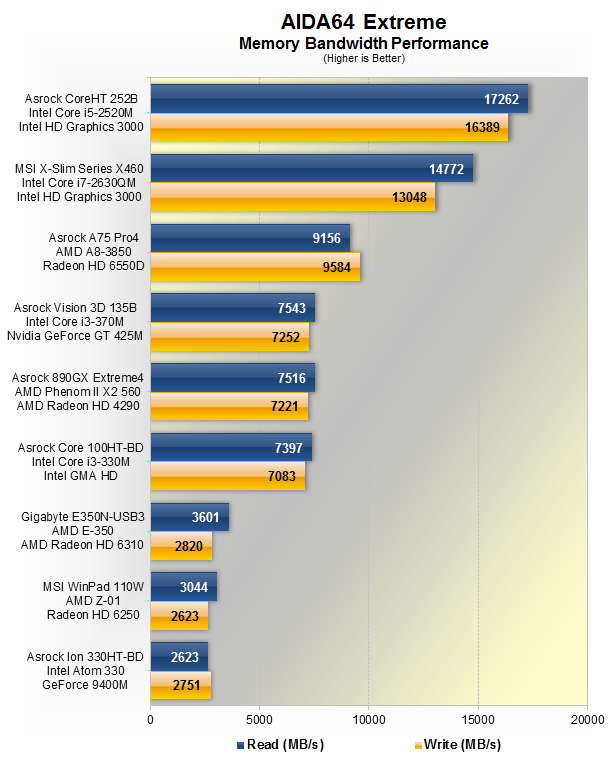
Armed with the AMD Z-01, the WindPad 110W's memory bandwidth is only slightly lower than the E-350 while it was slightly higher than the antiquated Intel Atom 330. Compared to today's desktop processors, 3.0GB/s is fairly weak.
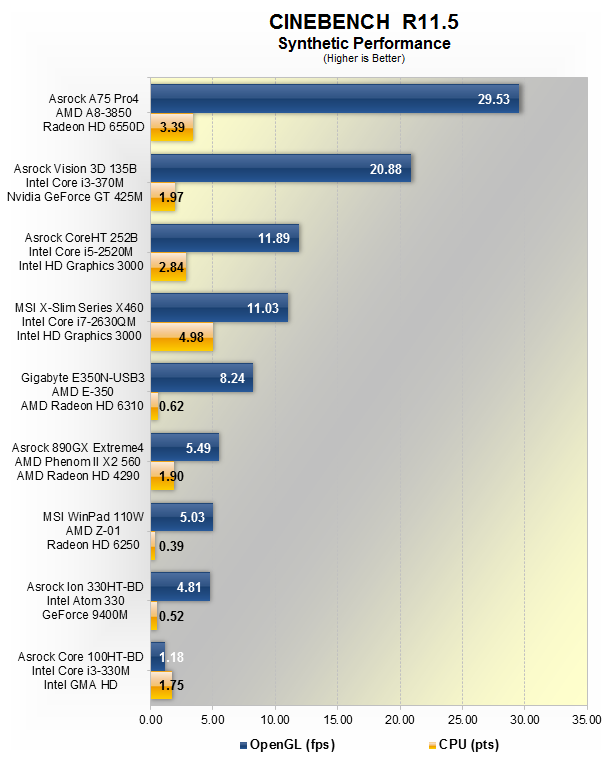
The WindPad's OpenGL performance impressed us as it delivered similar frame rates to the AMD 890GX chipset's integrated Radeon HD 4290. Moreover, it was slightly faster than the GeForce 9400M when paired with the Atom 330.
While its GPU performance was solid, the Z-01's CPU score was rather low at 0.39pts. By comparison, the Atom 330 managed 0.52pts and the E-350 produced a score of 0.62pts.
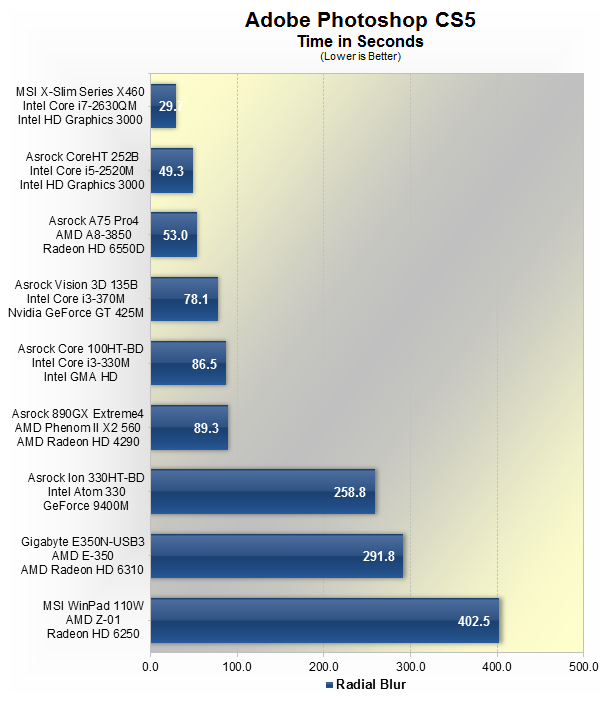
Although the WindPad had no problem loading powerful applications such as Adobe Photoshop CS5, graphics designers won't be replacing their workstation with this tablet. The device took 402.5 seconds to apply the radial blur filter whereas the E-350 took 291.8 seconds. Affordable desktop processors can complete the same task in well under 100 seconds.
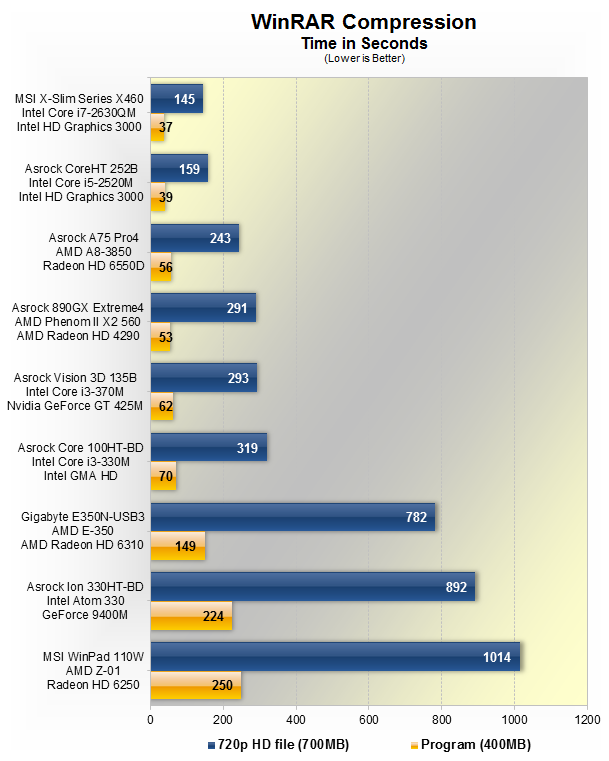
Those looking to compress files on MSI's slate should stick to small archives as it took 250 seconds to complete our program workload – 101 seconds longer than the E-350 – while entry-level desktop chips can finish the task in 60 seconds or less.
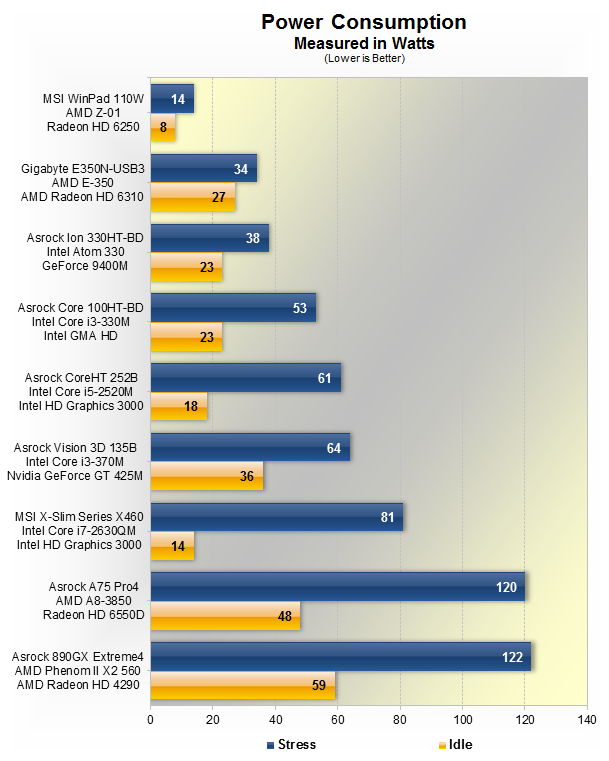
The WindPad uses just 8 watts of power at idle and a mere 14 watts under full load.

Despite that incredibly low power consumption, the tablet only lasts 258 minutes (just over 4 hours). That's considerably less than the battery life offered by other tablets and heavy users will find themselves bound to the wall more often than they might like. When stressed, the battery lasts 2 hours and 23 minutes which isn't that bad when compared to higher spec notebooks.